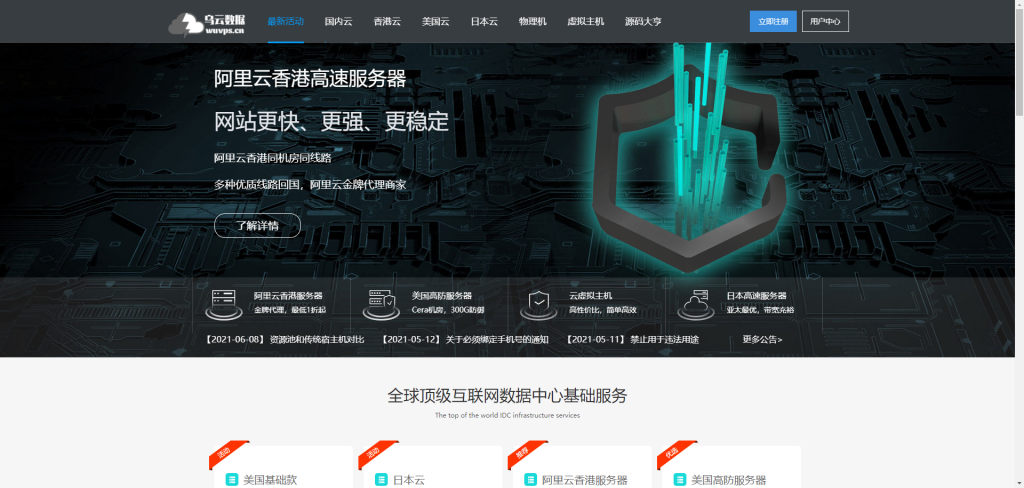总线What are the advantages of SCSI disk arrays and how are they assembled(什么是SCSI磁盘阵列有什么优点是怎么样组装的)
What are the advantages of SCSI disk arrays and how are theyassembled 什么是SCSI磁盘阵列有什么优点是怎么样组装的Disk array (DiscArray) is composed of many sets of disk or CDmachine according to certain rules, such as sub section(Striping) , block (Declustering) , cross access (Interleaving)is composed of a fast, large capacity memory subsystem. Underthe control and management of the array controller, it achievesfast, parallel or cross access, andhas a strong fault tolerance.From the user point of view, although the disk array is composedof several, dozens or even hundreds of disc, but still can beconsidered as a single disk, the capacity can be up to hundredsof megabytes to thousands, so this technology is widelywelcomed by the multimedia system.
Disk array is the full name of:
RedundanArrayofInexpensiveDisk, referred to as RAIDtechnology. It is the disk redundancy technology proposed byProfessor DavidPatterson of BerkeleyUniversity in California,USA in 1988. Since then, disk array technology has developedrapidly and gradually matured. Now basically accepted, thereare the following eight series.
1.RAID0 (0 level disk array)
RAID0, also known as data fragmentation, means that data isdistributed across multiple disks without fault tolerance. Thecapacityand the datarate is Ntimes as astand-alone capacity,N total disk disk array, I/O transmission rate is high, but theaverage fault free MTTF time (MeanTimeToFailure) of only a
single disk machine N, so the reliability of zero level diskarray is the worst.
2.RAID1 (1 level disk array)
RAID1, also known as mirrored (Mirror) disk, uses mirror faulttolerance to improve reliability. That is, each working diskhas a mirrored disk, and each time it writes data, it must bewritten to the mirrored disk at the same time. When reading thedata, it is only read from theworking disk. Once the disk fails,immediately switch to the mirrored disk, read the data from themirrored disk, and then recover the correct data from the diskby the system. Therefore, data canbe reconstructed in this way,but the working disk and themirror diskmust be kept one-to-onecorrespondence. The disk array is highly reliable, but itseffective capacity is reduced to less than half of the totalcapacity. As aresult, RAID1 is oftenused in applications whereerror rates are extremely demanding, such as finance andf inance.
3.RAID2 (2 level disk array)
RAID2 is also called a cross, it uses the Hamming code forcomplex test, without the need for CRC in each sector after theinspection (CyclicReDundancycheck) . Hamming code is a (n, K)linear block code, n is the length of the code word, K is thenumber of data bits, and R is the digit used for the test, sothere are: n=2r - 1r=n - K
Therefore, bit interleaved access is most advantageous forHamming code test. This kind of disk is suitable for reading
and writing large data. But redundant information costs arestill too large to stop the widespread use of such disks.
4.RAID3 (3 level disk array)
RAID3 is a single disk fault tolerant parallel transmissionarray disk. It is characterized by reducing the test disk toone (the RAID2 checksum is multiple, the DAID1 test disk is 1to 1) , and the data is stored in bits or bytes in the disk (eachdisk machine that is scattered over the same fan code withinthe group) . Its advantage is that the bandwidth of the wholearray can be fully utilized, and the data transmission time isreduced. The disadvantage is that each read and write affectsthe whole group, and can only do I/O once each time.
5.RAID4 (4 level disk array)
RAID4 is an array that can read and write groups of disksindependently. The check plate is only one.
The difference between RAID4 and RAID3 is: RAID3 is the bitwiseor byte interleaving, RAID4 block (sector) access, canindependently operate on a disk, it does not need to like RAID3,even if every small I/O operations also involves the whole group,only to group two a disk drive (a data disk, a disk can test) .Thereby increasing the I/O rate of small data.
6.RAID5 (5 level disk array)
RAID5 is an array of independent access to rotatedparity check.It differs from the RAID1, 2, 3, and 4 disk arrays in that it
does not have a fixed calibration disk, but rather distributesits redundant parity information evenly on all disks on whichthe array belongs.
Thus, there is both data information and verificationinformation on the same disk drive. This change solves theproblem of contention check disks, so DAID5 allows multiplewrite operations concurrently within the same group. So RAID5is suitable for large data operations, but also for a varietyof transaction processing. It is a fast, large capacity andfault-tolerant distributed rational disk array.
7.RAID6 (6 level disk array)
RAID6 is a two dimensional parity check independent access diskarray. Its redundancy check and error correction informationis evenly distributed across all disks, while data is storedacross thedisk inavariable sizeblock. This typeof disk arrayallows double disk errors.
8.RAID7 (7 level disk array)
RAID7 is based on RAID6 and adopts cache technology, which makesthe transmission rate and response speed improved greatly.Cache is a cache where data is written into cache before it iswritten to the disk array. Cache block size is generally used,and the size of the data block in the disk array is the same,that is, a block of cache corresponds to a block of disk. Whenwriting, the data is written into two separate cache, so thateven if one of the cache fails, the data is not lost. The writeoperation will respond directly to the cache level, and then
to the disk array. When data is written from cache to disk array,the data of the same track will be completed in one operation,so that many blocks of data can be written many times, and thespeed is improved. When reading, the host reads directly fromthe cache, instead of reading from the array disk and reducingthe number of disk read operations, thus taking full advantageof the disk bandwidth.
This combination of cache and disk array technology, to makeup for the lackof diskarray (suchas blockwrite defect requestresponse etc. ) , which makes the whole system in an efficient,rapid, large capacity, high reliability, convenient andflexible storage system is provided to the user, so as to meetthe needs of the technical development before, especially isthe need of multimedia system.
The key technology of analyzing disk array
Storage technology has received extensive attention incomputer technology, and server storage technology is the focusof the industry. When it comes to server storage technology,people are almost immediately associated with SCSI (Small,Computer, Systems, Interface) technology. Although the cheapIDE hard disk has greatly improved the performance, capacityand other key technical indicators, it can meet or even exceedthe needs of the original server storage devices. However, dueto the popularity and rapid development of Internet, the sizeof network servers is becoming larger and larger. At the sametime, Internet not only to the network server itself, but alsoto the server memory technology has put forward the sternrequest. Endless market demand has led to the rapid development
of server storage technology. The disk array is a mature serverstorage technology, but also one of the large capacityperipherals in the market.
In the high-end, the traditional storage mode, whether in scale,security, or performance, can not meet the growing demand forstorage of special applications. Such as storage area network(SAN) and other new technologies or applications continue toemerge, emerge in an endless stream new storage architectureand solutions, server storage technology by direct attachedstorage (DAS) to the storage network technology (NAS) expansion.In the end, with the development of hardware technology, in thepromotion of strong market demand, localization, based on thedirect connection of the disk array storage technology, speed,performance and storage capacity constantly to a new level. And,in order to satisfy the users of data storage security, accessspeed and large storage capacity, disk array storage technologyfrom the emphasis on technological innovation, pay attentionto system optimization, technical scheme as the leadingtechnology to promote gradually entered the industrialstandard, emphasizes the eyes and the size of the market, withmature products as the leading product popularity period.Looking back on the development of disk array, it has beenclosely related to the development of SCSI technology, and someproprietary technologies have been introduced by some vendors,如IBM的SSA 串行存储体系结构技术等 由于兼容性和升级能力不尽如人意在市场上的影响都远不及SCSI技术广泛。由于SCSI技术兼容性好市场需求旺盛使得SCSI技术发展很快。从最原始5MB/s传输速度的SCSI-1一直发展到现在LVD接口的160mb/传输速度的
Ultra 160 SCSI 320mb/传输速度的超320的SCSI接口也将在2001年出现见表从当前市场看超3 1。技术和SCSI RAID 廉价磁盘冗余阵列技术还应是磁盘阵列存储的主流技术。
SCSI技术
SCSI本身是为小型机区别于微机而言定制的存储接口 SCSI协议的版本1版本也仅规定了5MB/s传输速度的SCSI-1的总线类型、接口定义、 电缆规格等技术标准。随着技术的发展 SCSI协议的版本2版本作了较大修订遵循SCSI-2协议的16位数据带宽高主频的SCSI存储设备陆续出现并成为市场的主流产品也使得SCSI总线技术牢牢地占据了服务器的存储市场。协议则增加了能满足特殊设备协议所需要的命令集使得SCSI协议既适应传统的并行传输设备又能适应最新出现的一些串行设备的通讯需要如光纤通道协议
FCP、串行存储协议、串行总线协议等渐渐地SSP。 “小型机”的概念开始弱化 “高性能计算机”和”服务器”的概念在人们的心目中得到强化 SCSI一度成为用户从硬件上来区分”服务器”和PC机的一种标准。
通常情况下用户对SCSI总线的关心放在硬件上不同的SCSI的工作模式意味着有不同的最大传输速度。如40Mb/s的Ultra SCSI、160mb/的超3的SCSI等等。但最大传输速度并不代表设备正常工作时所能达到的平均访问速度也不意味着不同SCSI工作模式之间的访问速度存在着必然的”倍数”关系。 SCSI控制器的实际访问速度与SCSI硬盘型号、技术参数以及传输电缆长度、抗干扰能力等因素关系密切。提高SCSI总线效率必须关注SCSI设备端的配置和传输线缆的规范和质量。可以看出超3模式下获得的实际访问速度还不到超宽模式下实际访问速度的2倍。
一般说来选用高速的SCSI硬盘、适当增加SCSI通道上连接硬盘数、优化应用对磁盘数据的访问方式等可以大幅度提高SCSI总线的实
际传输速度。尤其需要说明的是在同样条件下不同的磁盘访问方式下获得的SCSI总线实际传输速度可以相差几十倍对应用的优化是获得高速存储访问时必须关注的重点而这却常常被一些用户所忽视。按4kb数据块随机访问6块SCSI硬盘时 SCSI总线的实际访问速度为2. 74mb s SCSI总线的工作效率仅为总线带宽的1. 7%在完全不变的条件下按256kb的数据块对硬盘进行顺序读写 SCS I总线的实际访问速度为141.2mbs SCSI总线的工作效率高达总线带宽的88%。
随着传输速度的提高信号传输过程中的信号衰减和干扰问题显得越来越突出终结器在一定程度上可以起到降低信号波反射改善信号质量的作用。同时 LV D 低电压差分技术的应用也越来越多。 L VD工作模式是和SE 单端模式相对应的它可以很好地抵抗传输干扰延长信号的传输距离。 同时
Ultra 2 SCSI and Ultra 3 SCSI mode by using the twisted paircable type SCSI dedicated to improve the quality of signaltransmi ssion.
In the concept of disk array, large capacity hard disk does notmean a single hard disk capacity, but refers to a single harddisk through the RAID technology, according to the RAID levelinto a larger capacity of the hard disk. Therefore, in diskarray technology, RAID technology is relatively critical, andat the same time, according to the selectedRAID level, the "bighard disk" also has different functions.
RAID is a very mature technology, but because of its high cost,inconvenient configuration and lack of relativelyprofessionaltechnicians, it is not very popular. According to statistics,75% of server systems around the world are not currently
configured with RAID. Because of the demand of server storage,the demand of data security and expansibility is higher andhigher, and the development potential of RAID market is huge.RAID technology is an industry standard and different vendorsdefineRAID levels. At present, the definition of theRAID levelcan be widely recognized by the industry only 4 kinds, RAID 0,RAID 1, RAID 0 + 1 and RAID 5.
RAID 0 is a storage space without redundant data striping, hasthe advantages of low cost, high performance, high read-writestorage space utilization RAID level, suitable for Video /Audio signal storage, temporary file dump on specialapplication requirements very strict speed. However, becauseof no data redundancy, its security is greatly reduced, and anydamage to the hard disk that constitutes the array will resultin catastrophic loss of data. Therefore, configuring 4 or morehard disks in RAID 0 is unwise for general applications.RAID 1 is two hard disk data, completely mirroring, goodsecurity, simple technology, easy management, good reading andwriting performance. But it can not be extended (single harddisk capacity) , waste of data space, in a strict sense, shouldnot be called "array. "".
RAID 01 integrated RAID 0 andRAID 1 features, independent disksconfigured as RAID 0, two complete sets of RAID 0 mirror eachother. Its performance of reading and writing is excellent andits security is high, but the cost of building an array is largeand the utilization of data space is low, so it can not be calledan economical and efficient scheme.
- 总线What are the advantages of SCSI disk arrays and how are they assembled(什么是SCSI磁盘阵列有什么优点是怎么样组装的)相关文档
- 磁盘阵列什么是磁盘阵列(raid)(无盘干事器必须把握的常识)[精彩]
- 磁盘阵列磁盘阵列是什么?如何构成磁盘阵列?[学习]
- 磁盘阵列2016新编磁盘阵列是什么?怎样组成磁盘阵列?
- 工作2016新编磁盘阵列是什么
- 硬盘什么是RAID磁盘阵列
- 硬盘什么是RAID0磁盘阵列系统
乌云数据(10/月),香港cera 1核1G 10M带宽/美国cera 8核8G10M
乌云数据主营高性价比国内外云服务器,物理机,本着机器为主服务为辅的运营理念,将客户的体验放在第一位,提供性价比最高的云服务器,帮助各位站长上云,同时我们深知新人站长的不易,特此提供永久免费虚拟主机,已提供两年之久,帮助了上万名站长从零上云官网:https://wuvps.cn迎国庆豪礼一多款机型史上最低价,续费不加价 尽在wuvps.cn香港cera机房,香港沙田机房,超低延迟CN2线路地区CPU...

HaloCloud:日本软银vps100M/200M/500M带宽,,¥45.00元/月
halocloud怎么样?halocloud是一个于2019下半年建立的商家,主要提供日本软银VPS,广州移动VDS,株洲联通VDS,广州移动独立服务器,Halo邮局服务,Azure香港1000M带宽月抛机器等。日本软银vps,100M/200M/500M带宽,可看奈飞,香港azure1000M带宽,可以解锁奈飞等流媒体,有需要看奈飞的朋友可以入手!点击进入:halocloud官方网站地址日本vp...

Cloudxtiny:£1.5/月,KVM-512MB/100GB/英国机房
Cloudxtiny是一家来自英国的主机商,提供VPS和独立服务器租用,在英国肯特自营数据中心,自己的硬件和网络(AS207059)。商家VPS主机基于KVM架构,开设在英国肯特机房,为了庆祝2021年欧洲杯决赛英格兰对意大利,商家为全场VPS主机提供50%的折扣直到7月31日,优惠后最低套餐每月1.5英镑起。我们对这场比赛有点偏见,但希望这是一场史诗般的决赛!下面列出几款主机套餐配置信息。CPU...

-
destoondestoon多少人是从PHP168过来的啊?Destoon的B2B很好,强烈支持你们重庆电信断网重庆电信的最近是怎么回事啊!老断网my.qq.commy.qq.com,QQ用户上不去?美要求解锁iPhone苹果美版有锁和无锁的区别三友网怎么是“三友”小型汽车网上自主编号申请如何从网上自选车牌号缤纷网谁都可以创造一个属于自己的缤纷世界中的缤纷是什么意思pintang俏品堂是干什么的?很多论坛都有他们的踪迹。pintang深圳御品堂怎么才能保证他们卖的东西都是有机食品?tumblr上不去我家里的网络打不开个别网站